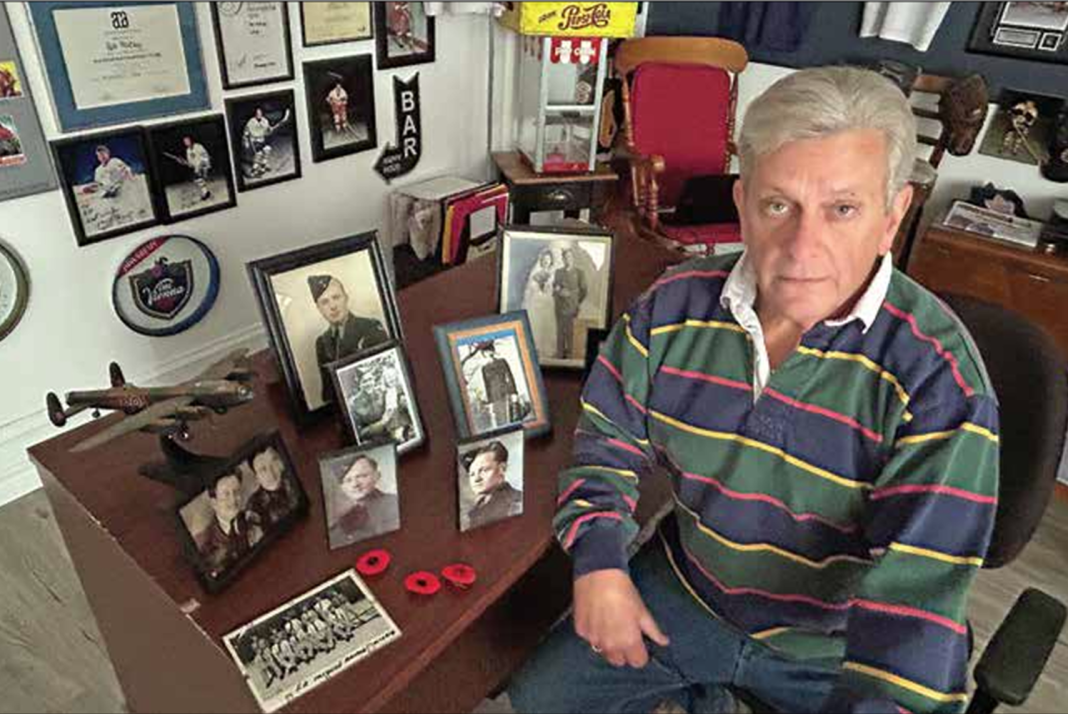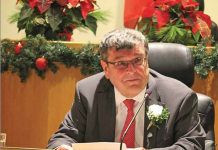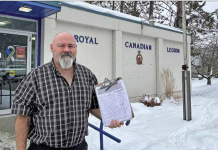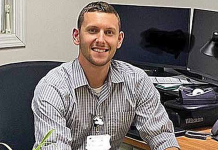The lead up to Remembrance Day is always a time of reflection for Haliburton’s Rob McCaig, who has compiled a running history of his family’s extensive involvement in the Second World War – including a mystery that remains unsolved today.
His parents, Keith and Nina McCaig, were each involved in the effort – the former an airframe mechanic and tail gunner with the Royal Canadian Air Force (RCAF) and the latter a cook with the Women’s Royal Naval Service.
Four uncles also enlisted – Clifford, the eldest, was the first to join in 1940, signing up for the army and later becoming a member of the special forces team ‘The Devil’s Brigade’. Wally, Keith’s twin, and Arnold joined the air force in October 1941, while Norman joined the army in 1942.
“The McCaigs were a big family, eight boys and one daughter – they had a farm in St. Louis de Gonzague, Quebec,” McCaig said. “Half of them went overseas to fight and the rest stayed back to run the farm… they had a lot of adventures, the McCaig boys.”
Clifford was 23 when he enlisted, Arnold was 22, while Keith, Wally and Norman were 19. Nina was a teenager, too, though the furthest she traveled was Halifax, where she was stationed on the HMS Cornwallis until 1946.
All but one of the McCaigs made it home following the war – sadly, Arnold never returned from what McCaig described as a top-secret mission to Albania on June 28, 1944. The details of that operation remain shrouded in mystery, he said.
An eight-man crew left a British Royal Air Force airbase in Brindisi, Italy in a Handley Page Halifax bomber shortly before midnight. They were carrying out an unknown mission 10 miles north of Lake Ohridsko in Albania when their plane was shot down by enemy forces. Albania, though considered partisan in the war effort, was largely occupied by German forces.
“The interesting thing is, the Halifax usually carried a seven-man crew, but this time they had eight people. I have all the letters that were sent to my grandparents and mom, who was first married to my Uncle Arnold in September 1942. She then married my dad six years later,” Rob said. “The extra crew member was someone from the National Liberation Army of Yugoslavia.”
Military records state five members of the crew bailed from the plane before it crashed. Albanian forces stated there was no sign of Arnold during the bailout, though he could have been one of the first to jump. There were three bodies found at the crash site.
Rob said initial letters home in early July said Arnold was missing in action. A second letter arrived later in the month, saying Arnold had been found alive and was temporarily safe, but that his whereabouts could not be disclosed. The letter also advised that until further information is received, Arnold would remain classified as missing.
On Dec. 28, a third letter was received stating the other crew members who made it back reported seeing three bodies at the crash site – though the military has never confirmed that Arnold was one of them.
“Arnold is still unaccounted for and any further information of his whereabouts will be forwarded,” the letter stated.
McCaig said key details from the mission – when the plane started taking fire, how many times it was hit, and the order of men bailing from the plane – were included in Arnold’s personal file.
“How did he write up and submit this report if he died in that crash?” McCaig ponders. “I believe Arnold did die, but we have no idea when, where or how. There’s no documented proof whatsoever.”
Another letter was received in May 1945, saying Arnold was presumed dead. Seven years later, in 1952, the McCaigs received a final letter generally confirming Arnold’s death but said “due to circumstances outside British control” it wasn’t possible to send search teams into Albania to locate his grave.
Arnold was an air gunner warrant office class 1 with the 148 squadron who, as of June 27, 1944 was confirmed to have flown in over 50 missions.
McCaig said the ordeal hit his mother, Nina, hard. The McCaigs took her in after she left the Navy. Years later, once confirmation of Arnold’s death came through, romance blossomed between Nina and Keith. They were married in 1948.
A year later, Nina received a letter addressed to her but written in Italian. Rob said she took the note to a translator, who burst into tears and tore the letter to pieces.
“My mom never knew the contents of that letter throughout the remaining years of her life,” McCaig said. “Every Remembrance Day was really tough on her. She wanted to go overseas to look for Arnold.
“They were absolutely in love. They wrote over 100 letters back and forth to one another. He wrote her the day before his final mission,” he added.
McCaig hasn’t given up hope of finding out what happened to his uncle – efforts are ongoing today to locate downed Halifax bombers that have been lost or buried over time. A trip to Albania, to try and source some answers himself, is on his bucket list.
So too is a trip to Malta – an island nation in the Mediterranean Sea. There, Arnold’s name is inscribed on a memorial to all those who served in the RAF and RCAF but didn’t make it home.
With this year marking the 80th anniversary of the war’s conclusion, McCaig feels it’s more important than ever to keep these sorts of stories alive.
“There isn’t a family that the war didn’t impact, but the McCaigs had a lot of involvement. It’s important to recognize the sacrifices – they were all so young when they enlisted, and they didn’t make a ton of money. The average soldier made $850 a year, if you were an officer or special services, you were lucky to get $2,000.
“My family enlisted because they believed in our country. Unfortunately, in the case of my Uncle Arnold, that belief cost him his life,” McCaig said.
Of the approximate 1.6 million Canadians who served in the Second World War, 44,090 died, according to online service files through Library and Archives Canada. Lest we forget.





